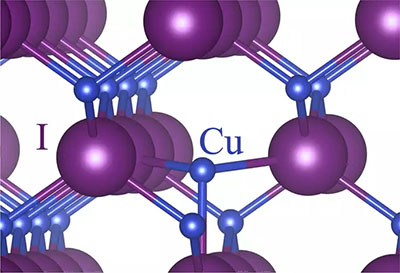| Jun 10, 2023 |
Microscopic paths to efficient heat transport in energy materials
(Nanowerk News) The researchers at the NOMAD Laboratory have recently made significant strides in illuminating the underlying microscopic phenomena that could guide the customisation of materials intended for heat insulation. This breakthrough propels the ongoing initiatives aimed at boosting energy efficiency and promoting sustainability.
|
|
Heat transport plays an instrumental role across a myriad of scientific and industrial applications, such as catalysis, turbine technology, and thermoelectric heat converters that morph waste heat into electrical energy. Especially within the realm of energy conservation and the evolution of sustainable technologies, materials endowed with superior thermal insulation capabilities are considered paramount. Such materials facilitate the capture and utilisation of heat that might otherwise dissipate into the environment. Consequently, optimising the design of highly insulating materials stands as a prime research objective, instrumental in fostering more energy-efficient applications.
|
 |
| Temporary formation of a defect pair in copper iodide. Although these defects only survive for a couple of picoseconds, i.e., for a trillionth of a second, they substantially influence macroscopic heat transport processes. (Image: Florian Knoop, NOMAD Laboratory)
|
|
Designing robust heat insulators, however, is anything but straightforward, despite the fundamental physical principles behind them being understood for nearly a century. Microscopic heat transport in semiconductors and insulators is typically comprehended in terms of the collective vibration of atoms around their equilibrium positions within the crystal lattice. These oscillations, referred to as "phonons" within the field, encompass vast numbers of atoms in solid materials, thus spanning large, almost macroscopic, temporal and spatial scales.
|
|
A recent collaborative publication in Physical Review B (Editor's Suggestions) and Physical Review Letters ("Anharmonicity in Thermal Insulators: An Analysis from First Principles"), from the researchers at the NOMAD Laboratory based at the Fritz Haber Institute, has considerably expanded the computational capability to calculate thermal conductivities with unprecedented precision, and without reliance on experimental input.
|
|
The researchers showcased that for robust heat insulators, the aforementioned phonon paradigm is inadequate. They employed expansive computations on supercomputers belonging to the Max Planck Society, the North-German Supercomputing Alliance, and the Jülich Supercomputing Centre, examining over 465 crystalline materials, the thermal conductivity of which had yet to be measured.
|
|
Besides identifying 28 robust thermal insulators, six of which demonstrated ultra-low thermal conductivity akin to wood, this study highlighted typically overlooked mechanisms capable of systematically reducing thermal conductivity.
|
|
"We detected the transient formation of defect structures that significantly alter the atomic motion for an incredibly brief duration," says Dr. Florian Knoop (now at Linköping University), the lead author of both papers.
|
|
"These effects are generally disregarded in thermal-conductivity simulations, given that these defects are so fleeting and microscopically localised relative to typical heat-transport scales that they are presumed inconsequential. However, our calculations revealed that they instigate lower thermal conductivities," adds Dr. Christian Carbogno, a senior author of the studies.
|
|
Such revelations may unlock new avenues for the meticulous adjustment and design of thermal insulators at a nanoscale level through defect engineering, which could potentially contribute to advancements in energy-efficient technology.
|

